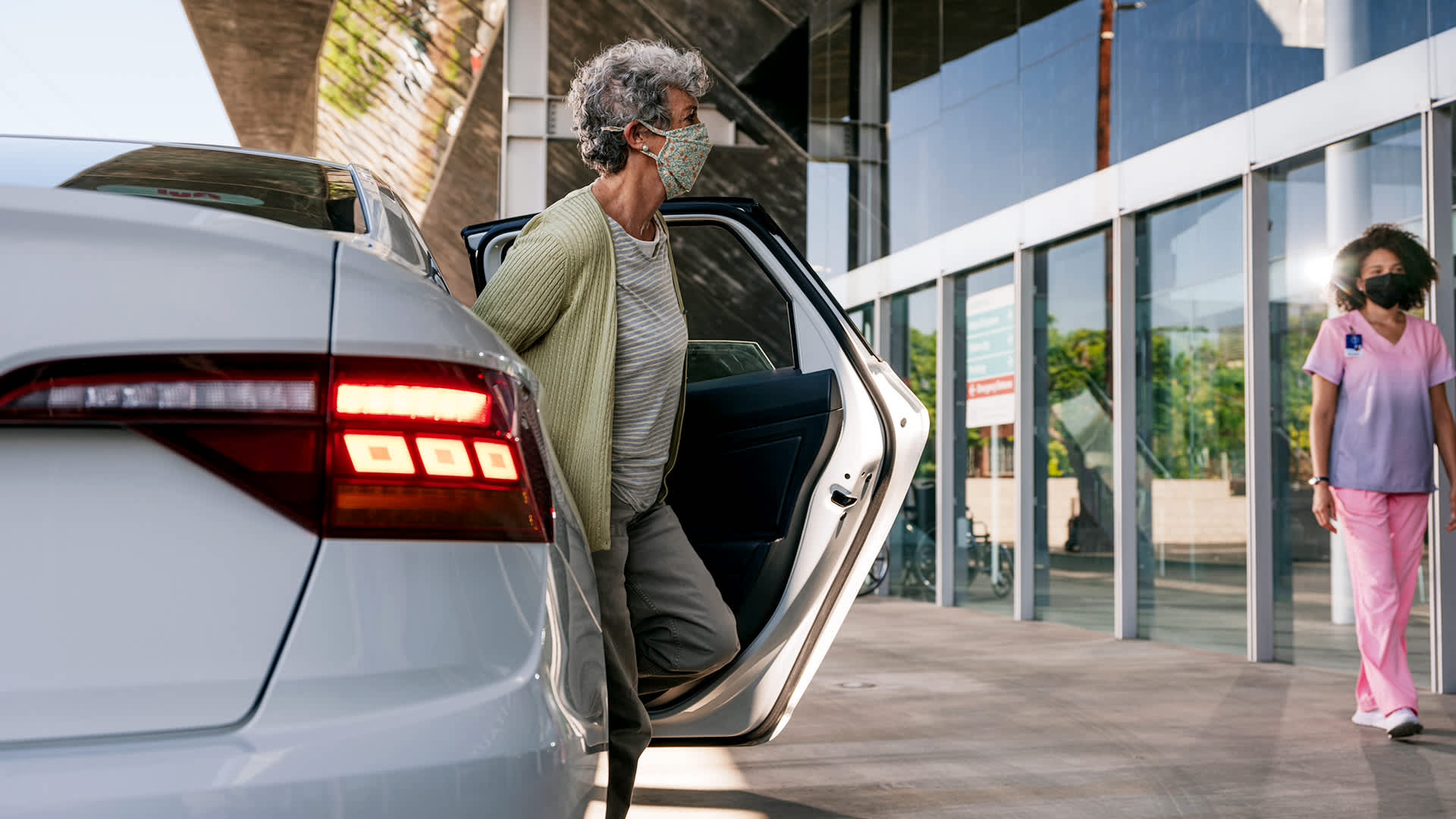
Beaucoup de gens tiennent pour acquis la possibilité de quitter la maison sur un coup de tête, pour savourer une crème glacée, acheter un nouveau livre, ou tout simplement pour rencontrer un ami. Mais pour les près de 2 millions d’Américains en fauteuil roulant avec qui ont de la difficulté à se déplacer, c’est un luxe inimaginable. Ils font face à des défis pour prendre les transports en commun, y compris des rampes d’accessibilité trop raides et la pression sociale d’être aussi rapide que les autres, et de nombreux véhicules de covoiturage ne peuvent pas s’adapter à un fauteuil roulant.
Les efforts de Lyft en matière de transport adapté
En 2019, cependant, Lyft a comblé cette lacune en matière d’accessibilité avec des courses en véhicule accessible en fauteuil roulant, dans lesquels les passagers sont jumelés à des chauffeurs qui peuvent accueillir leur véhicule motorisé ou leur trottinette qui ne se plie pas. Dans les villes qui offrent des courses adaptées (Boston, Chicago, Dallas, Los Angeles, New York, Philadelphie, Phoenix, Portland et San Francisco), une course sur 1 400 est adaptée. Cet ajout a eu un impact substantiel : selon le Bureau of Transportation Statistics, 10,1 % des personnes ayant des handicaps limitant les déplacements utilisent de nos jours le covoiturage pour se déplacer.
Mais les statistiques brutes ne parviennent pas à transmettre l’impact spectaculaire que les courses adaptées ont eu sur la vie de leurs passagers. Michael Martignetti utilise le covoiturage pour se déplacer à Boston depuis 2017, principalement pour des rendez-vous de physiothérapie, mais aussi pour des commissions, des soupers ou des coupes de cheveux occasionnelles. Avant de profiter des transports adaptés, Martignetti comptait sur un service d’autobus partagé de porte-à-porte. Mais comme d'autres passagers avaient des arrêts en cours de route, il fallait souvent trois fois plus de temps pour se rendre à destination. Martignetti devait également planifier des courses au moins 24 heures à l’avance, ce qui signifie qu’il ne pouvait pas quitter la maison si quelque chose se passait à la dernière minute. Quand il a eu accès aux courses adaptées, tout cela a changé : « Je ne pouvais pas faire 80 % de ce que je fais sans transport adapté, dit Martignetti. C’est essentiel à ma vie. »

Henrik Larsson, un chauffeur de course adaptée à Los Angeles, a vu personnellement à quel point le service est précieux pour la communauté des gens en fauteuil roulant. « Quand ils découvrent qu’ils peuvent simplement nous appeler et que nous serons là, ils sont tellement contents. Et je deviens content. C'est contagieux. »
En 2022, Deborah Thomas, administratrice à la retraite du Department of Children and Family Services du comté de Los Angeles, a subi un arrêt cardiaque, la plaçant dans un fauteuil roulant et la privant de ses façons habituelles de se déplacer. « Nous étions des gens normaux jusqu’à ce qu’elle ait eu cet arrêt cardiaque, se souvient Gwendolyn. Tout peut changer en un instant. » Ce qui rendait tout plus difficile, c’était à quel point il était coûteux d’obtenir à sa mère les soins dont elle avait besoin, car les transports médicaux coûtaient plus de 100 $ par course. Mais tout cela a changé avec le transport adapté. « Cela nous a littéralement sauvé », souligne Gwendolyn. « Son rétablissement a été accéléré par la facilité de sortir et de se rendre à des rendez-vous. »
En effet, les rendez-vous de soins de santé constituent une destination populaire pour les courses adaptées, 250 % plus courants que pour les autres courses Lyft. Selon Larsson, un chauffeur de Los Angeles, le cas d’utilisation le plus fréquent est de se diriger vers ou depuis une séance de dialyse, où les effets secondaires des maux de tête et des nausées ont tendance à empêcher la conduite pendant quelques heures.
Mais la communauté des utilisateurs de fauteuils roulants optent aussi pour des courses adaptées pour le plaisir et les courses, se dirigeant vers les aéroports, les cinémas et les magasins à des tarifs très similaires au grand public. Les courses adaptées sont également 50 % plus susceptibles d'avoir des destinations religieuses et civiques (comme le YMCA) que les autres. Gwendolyn note que depuis l’arrêt cardiaque de sa mère, le centre pour personnes âgées est devenu pour elle une destination clé afin de maintenir un sentiment d’appartenance à la communauté.
Une autre chose à noter à propos des courses adaptées : comme il y a un plus petit bassin de chauffeurs et de passagers, ils sont beaucoup plus susceptibles d’être jumelés à plusieurs reprises. Par exemple, Martignetti à Boston a fait 443 courses avec le chauffeur Xavier Cordova au fil des ans. Martignetti estime qu’il voit Cordova environ quatre fois par semaine. « Chaque fois qu'on fait une course, c'est facile d'avoir une conversation et on finit par se connaître, dit Cordova. On se connaît depuis si longtemps qu’on devient en quelque sorte une partie de la famille. »
Larsson est d’accord, et dit que conduire un véhicule adapté, et parler aux gens des défis auxquels ils sont confrontés, lui a donné une nouvelle perspective sur sa propre vie : « J’apprends beaucoup de ça, comme avoir l’état d’esprit pour surmonter et ressentir de la gratitude envers ma propre situation, dit-il. J'ai parcouru un chemin incroyable. C'est le cas de le dire! »


